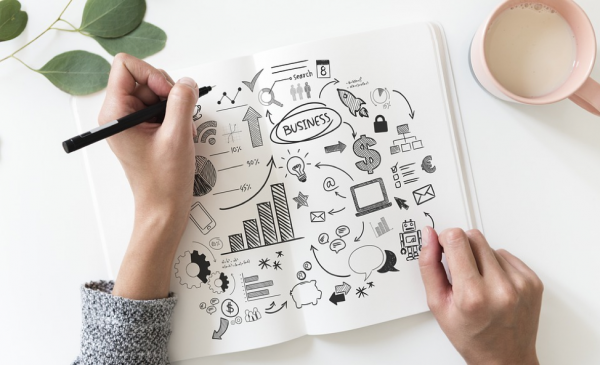What Is a Product Bundle?
In ecommerce, there are many different strategies and techniques that you can use to stay ahead of the curve. One tried and tested method of increasing revenue and gaining a competitive edge is product bundling.
You have probably seen this pricing strategy many times while shopping online. While it may seem like a basic approach, there is a science to practical product bundling that could help increase your profit.
A product bundle is a combination of goods or services sold to consumers in a single package. Typically, the products in a product bundle are complementary to each other.
For example, a tooth care brand might offer dental floss along with a subscription service to have refills automatically replaced. Or a retailer selling musical equipment might offer a product bundle containing a guitar, a tuner, strings, audio cables, and other accessories.
The first result on Amazon for the search term "electric guitar" is not just a guitar, but a guitar bundle by the Donner company. Donner's bundle includes many other products that complement the guitar.
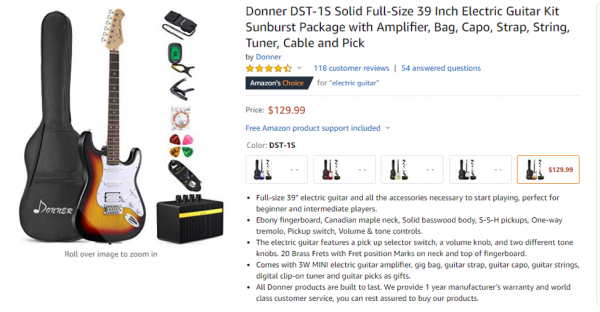
In this situation, the electric guitar is central to the bundle because it is the product most likely to trigger the desire to buy other accessories. The tuner and amplifier aren't necessary as upfront purchases, but they complement the guitar so well that it makes sense to buy the bundle.
Benefits of Product Bundles
Typically, a bundle or 'package deal' will give customers a discount on goods that they may have been inclined to buy separately at a higher cost. The bundle offers the customer more value and also makes their buying journey a lot easier.
For example, a consumer trying to create a new outfit will find that a bundle of well-matched clothes has what they're looking for and is cheaper.
But it’s not just the consumer that benefits from product bundles - retailers can benefit greatly from offering these deals as well. Here’s why.
With bundles, buyers are more likely to spend a lump sum, upfront, at that retailer's online store or marketplace listings instead of buying everything over an extended period and perhaps in multiple locations. While the push for multichannel distribution feeds this purchasing behavior, it comes at a cost for brands who have to pay for retargeting ads and emails to try and bring them back.
Product bundles can save retailers money on marketing and distribution by allowing the customer to purchase multiple products with one transaction. A key aspect of adopting a product bundling strategy is receiving a higher initial return on the cost of acquiring a customer.
That's not all - when done right, product bundling also helps keep inventory moving along at a healthy rate instead of stagnating. Products that are slowing down in sales or frozen stock can get a boost by being paired with relevant, sales-driving items. Retailers who offer package deals also find that they run out of the bundled products at the same time, making restocking and general inventory management more straightforward.
Consumer Surplus and Product Bundles
Product bundling is an effective pricing strategy as well as a way to market products.
When a customer's perceived value of products in a bundle exceeds the price of the offer, consumers are more likely to buy them. Every customer has an amount they're willing to pay for a product. The difference between that price and what they pay is known as the consumer surplus. Product bundling is an effort to capture the maximum amount of this surplus, making the customers feel like they are getting products at a steal.
Let’s say you’re selling clothing, and you know that based on your research, some customers value appearance over comfort. Group A (appearance) of customers are willing to pay $100 for a pair of shoes, and $10 for the socks, while Group B (comfort) are willing to pay $94 for thee shoes and $12 for the socks.
The maximum price for both groups would be $110 and $106, respectively.
You decide to offer the shoes at $96 and the socks at $10, totaling $106. The price creates a surplus of $4 for Group A, but no surplus for Group B, which means they might be less likely to purchase.
If you bundled the items and offered it for $104, Group A experiences a surplus of $6 and Group B a surplus of $2, making the offer more satisfying for both parties. However, a product bundle offering both products for $102 would appeal even more to both sets of customers, driving up the surplus as well as the potential they will buy.
Examples of Good Product Bundling
Product bundling has been used to significant effect by retailers around the world, and it’s important to know the different strategies available.
For example, some retailers offer mixed bundling on their products, wherein products can be bought individually or as a bundle. Others offer pure bundling, a strategy in which consumers can only purchase certain products as part of a bundle.
Nintendo is widely recognized for its effective mixed bundling strategy. When Nintendo offered mixed bundling on video game consoles, console sales increased by 100,000. The video games provided in the deal also saw an increase of 1 million units sold. However, a Harvard study showed that the company’s efforts to offer pure bundling with no alternatives resulted in a 20% decrease in bundle sales.
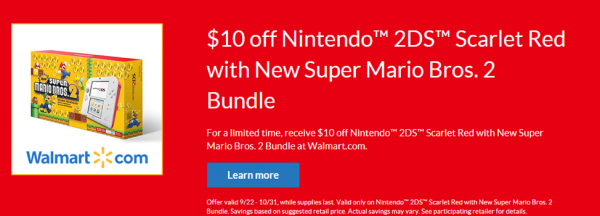
Mixed bundling on the official Nintendo website.
The difference between the strategies comes down to the perception of value. For many consumers, the pure bundle likely had products they didn't want, discouraging them from buying anything at all.
Another often-cited example of excellent product bundling is the strategy popularized by the McDonalds franchise – offering fries, a drink, and a hamburger all in one meal. In this case, consumers are probably most interested in the burger. The discount will sway the customers who intended to buy only a hamburger to buy the bundle instead, which offers the additional products (the fries and drink) at a lower price than when purchased individually.
This approach allows McDonald's to experiment with new marketing campaigns, the test which products go well together in a bundle, increase sales, and learn more about their customers.
Bundling works well when the bundle not only offers a discount but simplifies a customer's purchasing decision at the same time. Someone shopping for home entertainment equipment can be overwhelmed with choices, a phenomenon reported by 64% of customers.
Reviews for television speakers can discourage customers and force them to abandon shopping carts. A separate study in the UK showed that 55% of customers abandoned their carts for fear of making the wrong choice on a product. The results are a prime example of when bundling can come to the rescue. A thought out bundle including everything a customer needs for their home entertainment setup relieves them of the burden of choice and encourages them to make a purchase.
How to Create Product Bundles
To create a product bundle, consider your own business needs as well as the needs of your customers. There are several best practices when it comes to creating the perfect bundles:
- Bundle high-selling products with low-selling ones.
- Use bundles for advertising certain products.
- Identify buyer personas to create targeted bundles.
Perhaps you have certain products that aren’t selling well and you want to move the stock. Taking the time to consider which high-selling products complement products that aren’t selling as well can reveal opportunities to offer your customers value with a bundle. Pairing the products could also relieve you of stock so you can re-evaluate your inventory decisions and limit inventory holding costs.
You can raise awareness for new products by bundling them with items that have sold well with your consumer base in the past. Gift-giving holidays are also a good opportunity to bundle products together and offer your customers an easy, accessible gift option for loved ones.
Take advantage of these opportunities by making and using buyer personas to examine the desires and needs of your consumers.

Source: Blog.aweber.com
Every person is different, but trends in buying behavior will give you a good idea of what people want, and which products in your inventory go together. Identify personas and segment popular items together at a reduced price to give your customers an appealing offer.
Retailers also use price comparisons to promote bundles. These highlight the price saving benefits of the bundle, convincing them to buy more products. Remember, you're making things cheaper and easier for your customers with a bundle - don't be afraid to show them what they're getting.
A graphic showing the individual prices of both products, the total, and then that total crossed out with the total for the bundle beside it is a great way to remind customers of the savings on an offer.
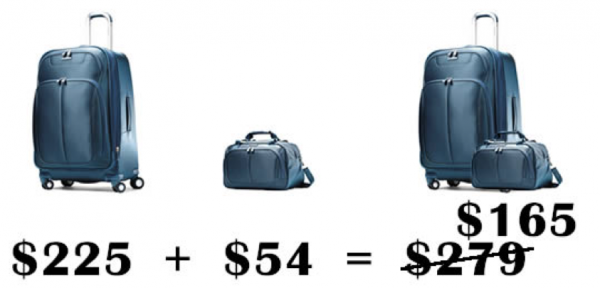
Source: NeuroScienceMarketing
Retailers can also bundle products that are similar to each other. Book retailers often bundle similar books together because they can assume that their customers may be interested in similar reading material. These assumptions can become more specific with solid market research.
In creating product bundles, a final thing to consider is when to offer them. While some retailers will show the bundle while the customer is shopping, others may prefer to upsell the customer at checkout instead. This route depends on the nature of your products and customers, and it's worth trying out some A/B testing with different customer groups to determine which method appeals to them the most.
Experimentation is a great way to create product bundles in general. Try putting your most popular products together, even if they're not necessarily complementary. There might be an undiscovered relationship between the two that appeals to customers.
You can also find that 'mega bundles' with larger discounts are more effective than smaller, boutique bundles with a handful of related products. Once you have your market research at hand, conduct some tests, and see which bundles resonate the most with your specific customer bases in different sales channels.
Tools and Resources for Creating Product Bundles
To create product bundles that resonate with your customers, you'll need to gather as much information as possible. Using buyer persona templates is a great start, but ideally, you'll be leveraging advanced analytics to get more granular data.
Here are some of the product metrics you should be tracking to stay ahead of the curve:
- Top sellers: Monitor the revenue generated by your most profitable SKUs, or the number of units sold, to gain insight into which products you should build your bundles around.
- Worst sellers: You can use bundling to give your worst-selling products a boost by monitoring sales channels over a given time frame to identify which products lag behind the rest.
- Annual growth: Gain insight into the YoY growth of an individual product by analyzing its sales record over a year.
- SKU Profitability: Tools that separate your overhead costs and view the true profitability of an individual product can help inform your bundling strategy.
- Listing profitability: This report gives more granular data on the profitability of a product per individual sales channel. This data can help you determine which channels to sell certain bundles.
- Trending profitability: Identify trends over set periods to learn which times of the year see more or less demand for products, and bundle accordingly.
Tools that can provide this information will help you create effective bundling strategies for different product groups during different times of the year based on seasonal demand and profitability.
Demand forecasting can also help predict sales velocity and stockout dates for products, allowing you to plan your bundles proactively. Retailers track orders analytics to gain insight on individual orders with multiple products to monitor high-value orders and orders containing products bought together.
You can determine which products are frequently bought together on Amazon by using tools like Yasiv, which creates visual maps to show the relationships between products sold (Amazon virtual bundles). Visual maps are a great way to easily determine which products tend to complement each other, making for a brand new bundling idea.
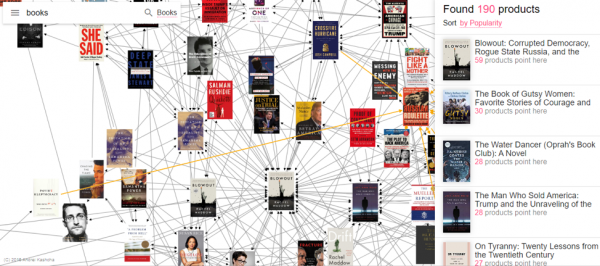
Individual customer analytics are also invaluable. The lifetime value of a customer, how much money they spend, and how frequently they visit your store can all help you plan your product bundles. Skubana has tools to track all of the metrics mentioned above and more, allowing you to gain valuable insight into customer behavior. You can leverage these tools to develop advanced product bundling strategies and inventory management practices. Our blog also contains extensive content on other ecommerce tips and strategies.






